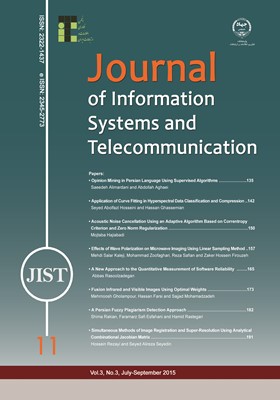Effects of Wave Polarization on Microwave Imaging Using Linear Sampling Method
محورهای موضوعی : Image ProcessingMehdi Salar Kaleji 1 , Mohammad Zoofaghari 2 , reza Safian 3 , Zaker Hossein Firouzeh 4
1 - Isfahan University of Technology
2 - Isfahan University of Technology
3 - Isfahan University of Technology
4 - Isfahan University of Technology
کلید واژه: Linear Sampling Method, Inverse Scattering, Polarization, Singular Value Decomposition (SVD), , , , ,
چکیده مقاله :
Linear Sampling Method (LSM) is a simple and effective method for the shape reconstruction of unknown objects. It is also a fast and robust method to find the location of an object. This method is based on far field operator which relates the far field radiation to its associated line source in the object. There has been an extensive research on different aspects of the method. But from the experimental point of view there has been little research especially on the effect of polarization on the imaging quality of the method. In this paper, we study the effect of polarization on the quality of shape reconstruction of two dimensional targets. Some examples are illustrated to compare the effect of transverse electric (TE) and transverse magnetic (TM) polarizations, on the reconstruction quality of penetrable and non-penetrable objects.
Linear Sampling Method (LSM) is a simple and effective method for the shape reconstruction of unknown objects. It is also a fast and robust method to find the location of an object. This method is based on far field operator which relates the far field radiation to its associated line source in the object. There has been an extensive research on different aspects of the method. But from the experimental point of view there has been little research especially on the effect of polarization on the imaging quality of the method. In this paper, we study the effect of polarization on the quality of shape reconstruction of two dimensional targets. Some examples are illustrated to compare the effect of transverse electric (TE) and transverse magnetic (TM) polarizations, on the reconstruction quality of penetrable and non-penetrable objects.


